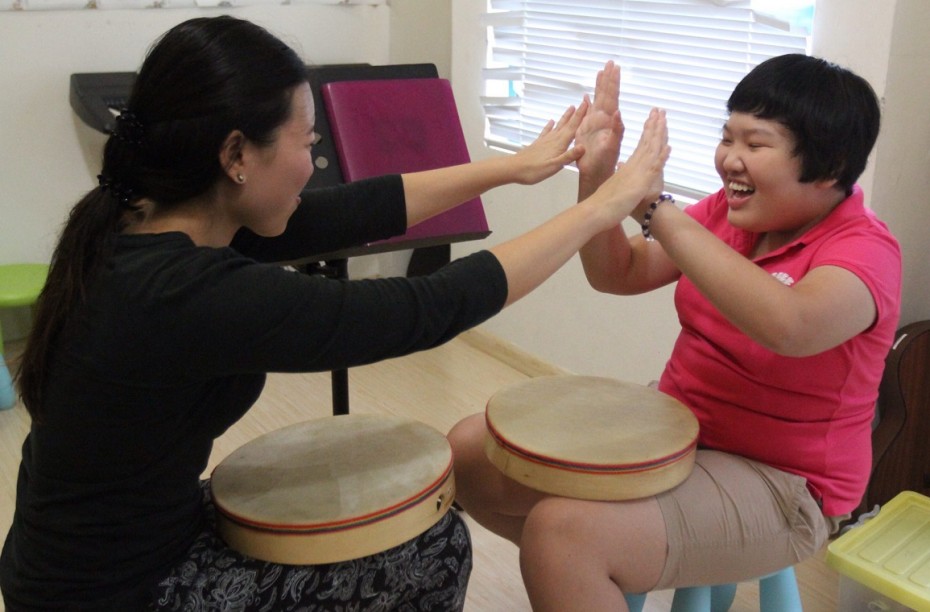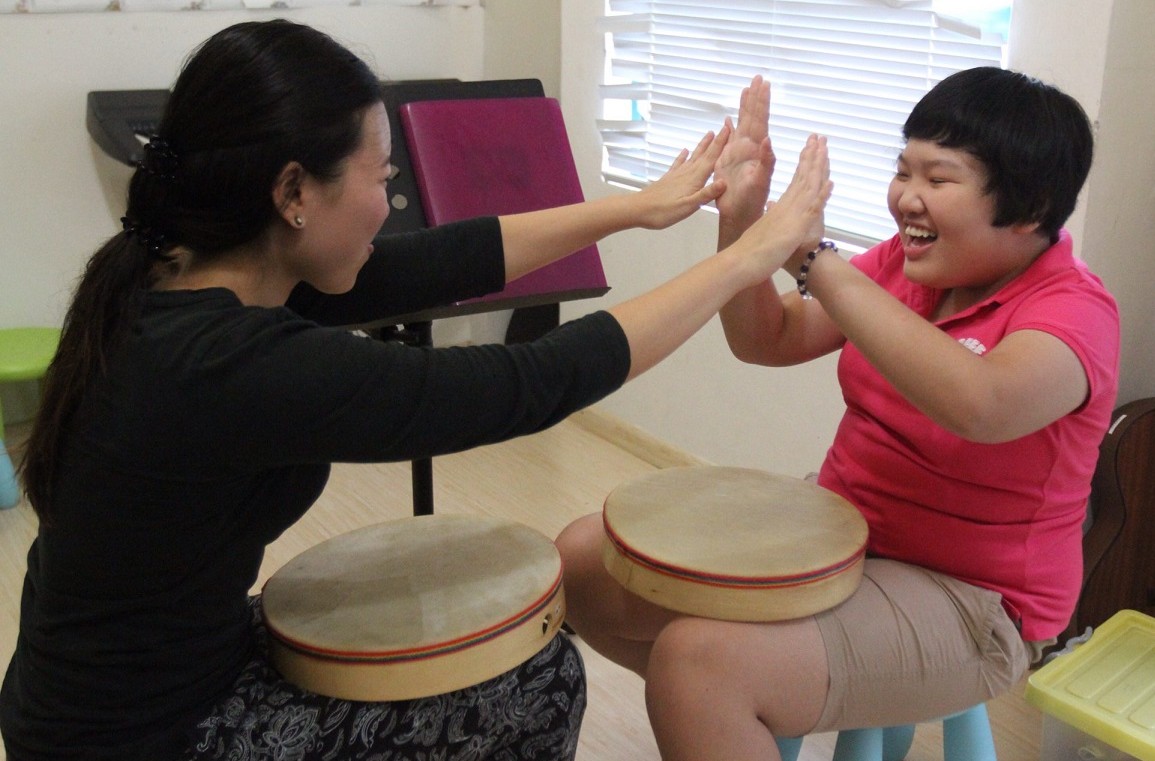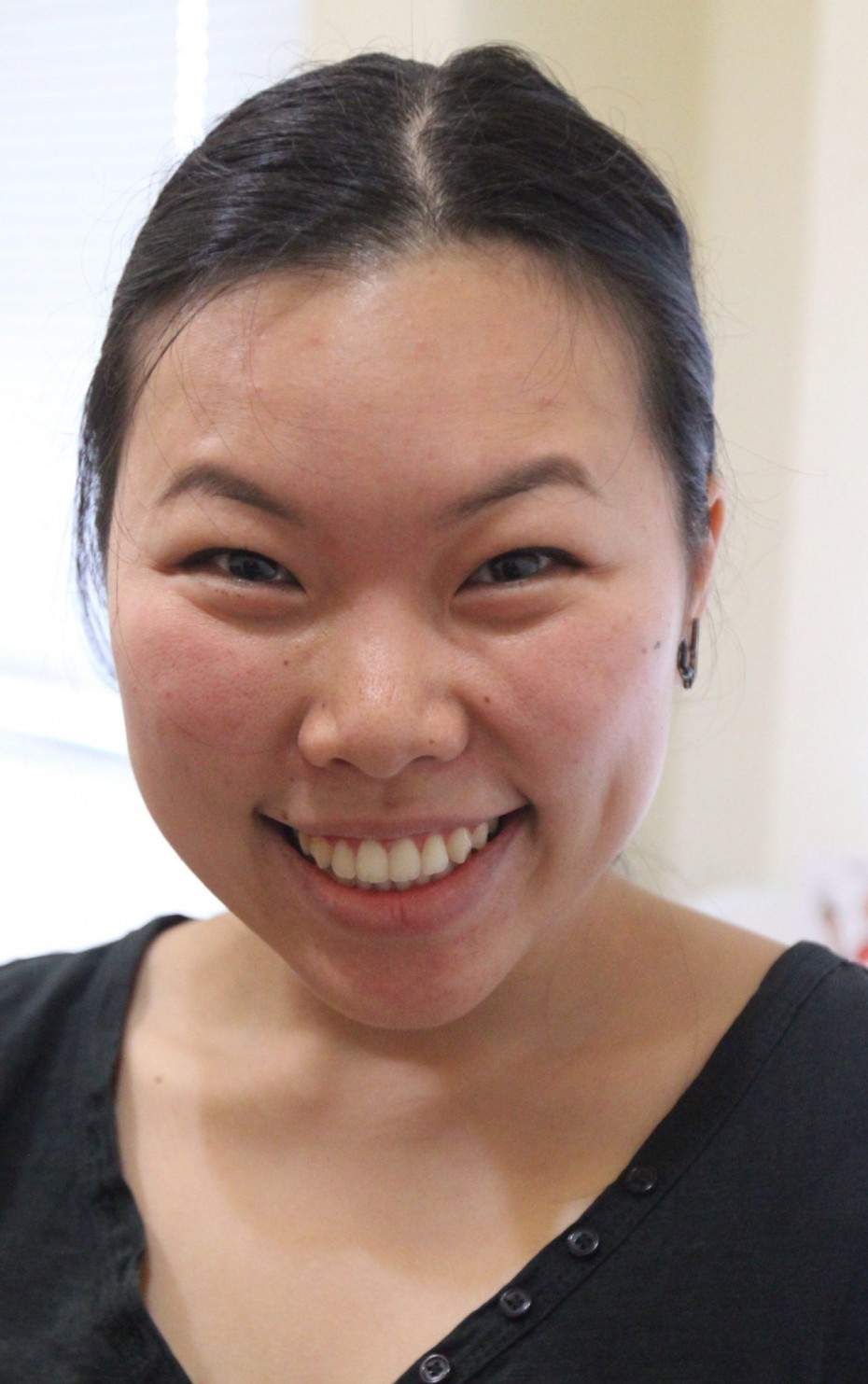BACK when she was in the creative industry, Sherie Seow had it all – an exciting job, good pay and invites to the biggest parties in town.
Then two years ago, she gave it all up to pursue her true passion – teaching special needs children.

Sherie Seow, 25, left her high-flying job in a creative agency to pursue her dream of teaching children, especially special needs children.
Today, the 25-year-old works with kids with learning or physical disabilities in Australia. It’s a far cry from her days in Kuala Lumpur’s creative scene, but as far as she’s concerned, she’s living her dream.
“People used to call me up to get invites to all the parties in town. Now, I help children cut paper with special scissors,” she said, referring to the range of different scissors designed specifically to help special needs children learn arts and crafts and gain confidence from it.
Seow is but one of many young Malaysians who are now driving forward the special needs education industry, which has long been under-appreciated.
Over the past few years, an increased awareness about how special needs children (like those with autism and Down Syndrome) need help has led to a wave of young therapists dedicating themselves to helping these children find their place in the world.

‘This is not an easy job,’ said Mah, who works with the Early Autism Project. ‘Loving kids is one thing, but you also have to be built for the job.’
Joanna Mah, 24, is one of them. She studied for a Masters in special and inclusive education, and now works with the Early Autism Project (EAP) in Bangsar, Kuala Lumpur, where she reckons 75% of the people applying for jobs are under 30.
Of the 35 employees at EAP, only two are above the age of 30.
“It’s still a relatively new thing,” said Mah of special needs education in Malaysia. “Maybe that’s why most of the therapists here are young.”
Another reason, according to most of the therapists we spoke to, is because the job is so demanding and support is so hard to come by, many tend to burn out and leave the industry before they turn 30.
“It’s a challenge every day,” said Seow. “Australia has very good policies for children with special needs, but having to deal with children who will scream for hours when their routine is disrupted can be very upsetting for some.”
Not a job for just anyone
As much as the likes of Mah and Seow love what they do, the challenges of being a special needs educator or therapist can be pretty tough – especially in Malaysia.
You have misinformed parents, children who occasionally lash out and an almost complete lack of professional support systems.
But more important, there is also the knowledge that you are responsible for the children’s progress. And what progress there is, is usually frustratingly slow.
“It’s a noble cause, and we all want to see more people doing what we do,” said Mah.
“But some people just don’t know what they’re getting into when they sign up.
“You need observational skills, the ability to handle stress, and you have to be physically fit.”
If you’re doing it for the wrong reasons, you will burn out.
Yes, physically fit – because some special needs children are more likely to injure themselves when they’re acting out, so you have to be able to safely restrain them.
The most extreme – and traumatic – case Seow experienced was when a child at her school in Australia (where special needs children are assimilated into “normal” schools) had to be forcibly given painkillers. The child had been screaming incessantly, and was inable to say if he was in pain.
“I cried,” said Seow. “This job is not for everybody.”

“In terms of our nation’s general awareness of special needs children and their education, we’re getting there. There are many available special needs centers and even some normal schools that accept higher functioning special needs children with aides,” said Wong Lynn Li.
Applied behavioural analysis (ABA) therapist Wong Lynn Li, 24, added: “If you’re doing it for the wrong reasons, you will burn out.
“Some may do it because they are passionate individuals who wish to help the community, but others because of the misconception that being a therapist is easy as long as they are good with children.
“Conducting ABA therapy requires more than just patience with children. It requires loads of creativity in lesson-planning and the flexibility to switch things around.”
Young therapists in Malaysia also face professional hurdles.
To me, special needs kids have this amazing and unique way of seeing the world, and I love having my mind blown on a regular basis, and that’s all the reward I need.
“There isn’t much professional support for us in Malaysia, like seminars and advanced training courses. We’d have to go to Singapore or Australia for that,” said Yeevon Eng, 28, who is an education therapist at Start LRC.
“Combined with a pay that isn’t very high, many therapists get demotivated when they feel they aren’t making progress with the children and their careers, and often consider leaving the country for another place with better support systems for therapists and special needs children.”
All worth it
While the job can be mentally and physically draining, it is also deeply rewarding.
Wong, a psychology graduate, was inspired to become a therapist two years ago after listening to the struggles and accomplishments of a mother who had three autistic children.
“Imagine working with a child for weeks to get them to give you a high five, make eye contact, or say the word ‘Hello’, and eventually reach a point where they can spontaneously come up to you, look you in the eye, greet you with a big warm hug, and tell you about their day. It’s the best feeling in the world!” she said.

‘There’s a lack of parental awareness, which results in a delay in diagnosis, causing children to miss out on that critical period of intervention (before age four) where therapy has the best long term effects,’ said Tan, who teaches academics to special needs children.
Lavender Tan, 24, tutors special needs children in their homes and recently started training for and practising play therapy, which involves art, drama, music, puppets, and sand.
“I wanted to help special needs kids because there are so few teachers in Malaysia to cater to them,” she said.
“To me, special needs kids have this amazing and unique way of seeing the world, and I love having my mind blown on a regular basis, and that’s all the reward I need.”
For some like music therapist Isabel Tan, 24, it’s not enough to be helping special needs children – she wants to help MALAYSIAN special needs children.
“I could have started my career in Australia (where she did her Masters in music therapy),” said Tan, who is one of only six music therapists in Malaysia.
“But I feel happiest helping our own children, who are not getting the same attention and support as Australian kids.”
What needs to change
Clearly, Malaysians’ perception of special needs children has improved considerably over the past few years. Now, it’s time the support services improve as well.
Mah, who studied in the University of Roehampton, England, said Malaysian special needs children lack the educational support children in more developed countries receive.
“In the UK, there are special needs coordinators in schools, which is not common in Malaysia due to a lack of resources, manpower, and training,” she said.
But as with all change, it needs to begin at the grassroots.
“Many people in our society have yet to be educated about special needs, and assume that all special needs people are incapable, troublesome, and handicapped,” said Eng.
“In families with a special needs child, the siblings of that child, as well as the parents, need to be educated and supported.”
In Malaysia there is a marked lack of manpower as well as trained teachers.
According to Eng, this type of support is very common in developed countries, even in local community centres.
“In America, many states have an early intervention programme, which is provided free of charge through the local school district or county. But this is not prevalent here. With an early detection support system, we would be able to do more to help these children,” she added.
Seow is currently in Australia, getting her degree in early childhood education, specifically targeting special needs children.
“The biggest difference between Australia and Malaysia is the level of governmental support and societal acceptance in schools,” she said.

Music therapy helps with autistic children’s sensory input, giving them something to feel or do that isn’t harmful to themselves.
“In Australian schools, special needs children are given a lot of attention and help in order to enable them to fit into society.”
Help given extends to special programmes that enable children who find it difficult to convey their thoughts (like autistic children) to answer yes or no questions and even special cutlery and scissors to give these children a sense of independence.
“In Malaysia there is a marked lack of manpower as well as trained teachers,” said Seow, who currently has no plans on returning to the country. “The support system there is just so much better.”








Tell us what you think!